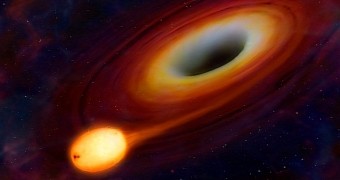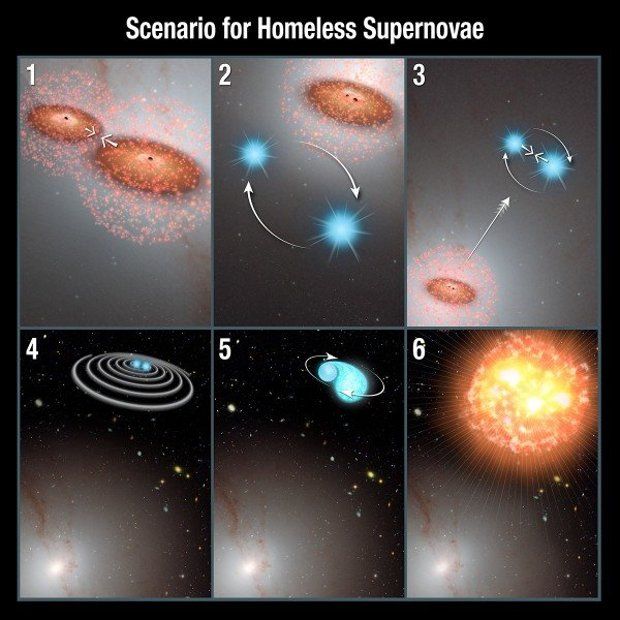In a new paper in the journal Monthly Notices of the Royal Astronomical Society, University of Illinois researcher Ryan Foley and his colleagues propose that black holes sometimes act as slingshots and throw stars out of their galaxies. All alone in deep space, these stars then die as outcasts.
This theory is based on a study of 13 exploding stars, i.e. supernovae, discovered by NASA's Hubble Space Telescope in parts of the cosmos where there were no other stars to be found.
Such rogue supernovae, as astronomers like to call them, are true oddities. Stars like to hang around in groups, so how did these dying orbs wound up in complete isolation?
“Looking around where the supernovas exploded, there’s nothing there - no trace of star formation, no clusters of old stars, there’s nothing nearby,” scientist Ryan Foley explains.
Tracking the origin of the supernovae
To get to the bottom of this mystery, the University of Illinois astronomer and fellow researchers set out to determine the origin of the castaway exploding stars seen by Hubble.
Based on their location in space at the time when the telescope spotted them and the speed at which they were moving through the cosmos, the team managed to identify the stars' former home galaxies.
The scientists concluded that, millions of years before exploding as outcasts all alone in deep space, the mysterious rogue orbs had all been flung out of their proper place.
What's more, based on their particularities, the astronomers established that these stars were once part of a binary system. Over millions of years, they got so close to their companion that tidal forces ripped the latter apart.
Whatever material was ejected by the dead star when it was torn to shreds was dumped onto the survivor, which then exploded in a supernova.
As for how the stars got kicked out of their galaxies, it's black holes that are to blame. More precisely, intense black hole activity resulting from the merger of two galaxies. Or, as Ryan Foley likes to phrase it, a binary black hole slingshot.
This explains the castaway stars' rush
Getting an unexpected push from a binary black hole explains the speed of the rogue supernovae, the team write in another report. Anything less intense than this simply wouldn't have cut it.
“There is only one way to get a binary star system moving that fast: a slingshot from a close flyby of a binary supermassive black hole,” researcher Ryan Foley explains. “How do you get a binary supermassive black hole? Merge two galaxies,” he goes on to detail.
In light of their findings, the astronomers propose that future studies focus on identifying binary black hole systems by tracking the origin of such castaway supernovae. Kind of like following a trail of crumbs back to the bakery.
In turn, a study of such binary black holes can further our understanding of gravity, dark matter and dark energy, even relativity.

 14 DAY TRIAL //
14 DAY TRIAL // 

